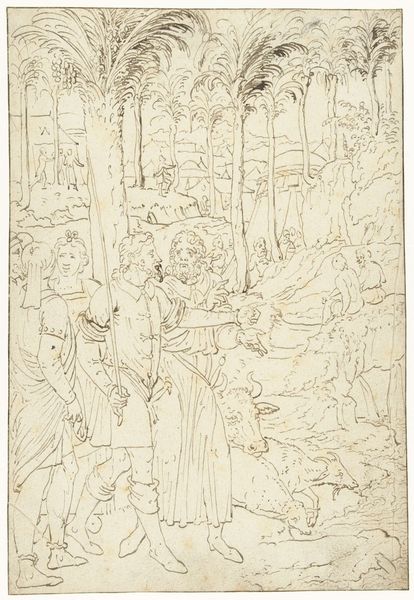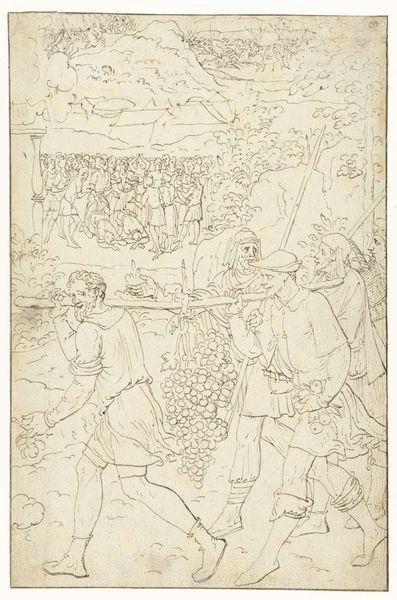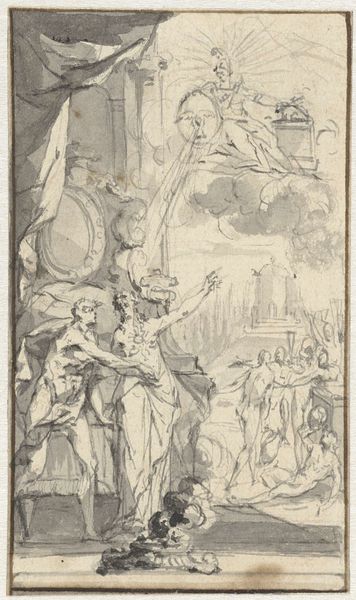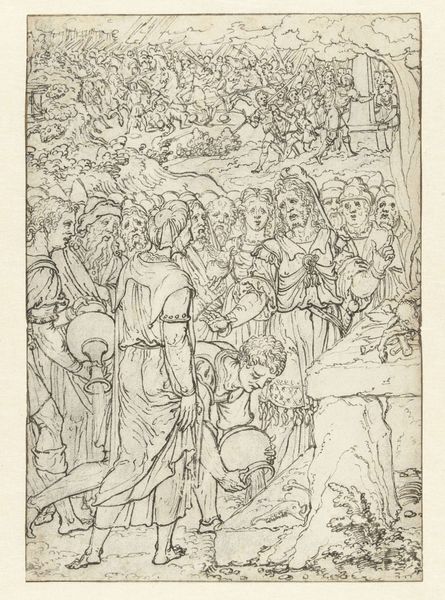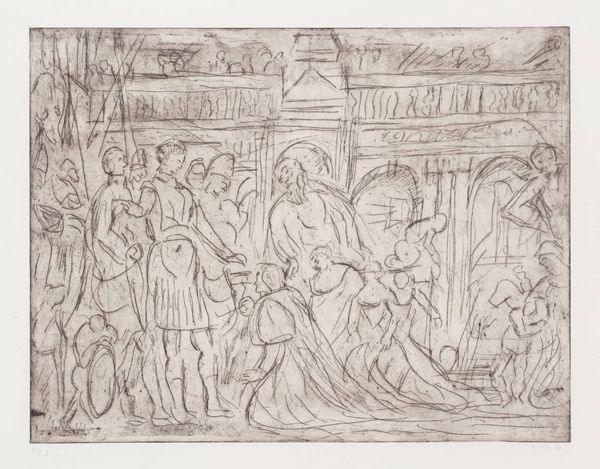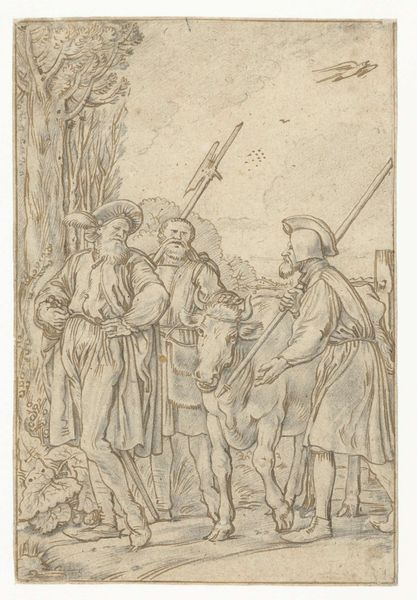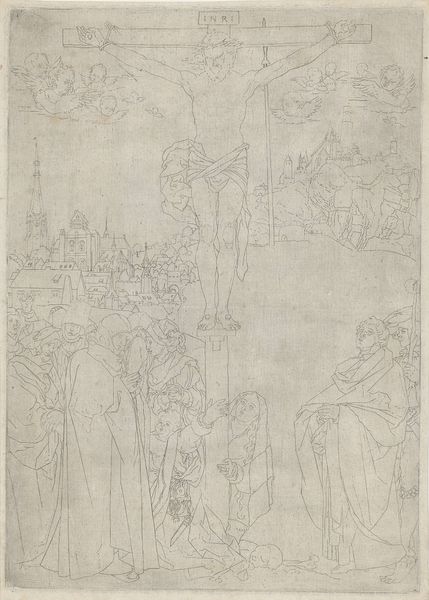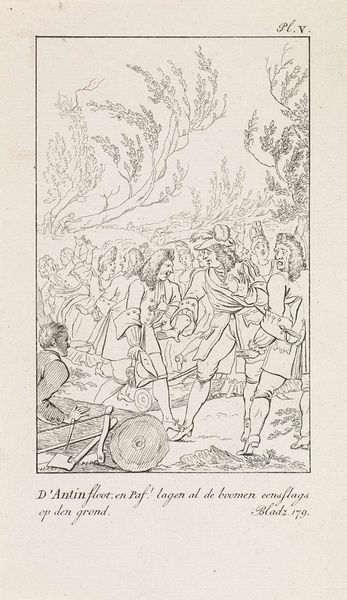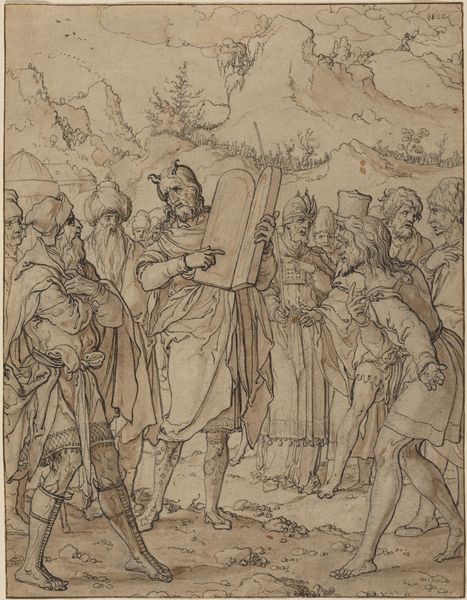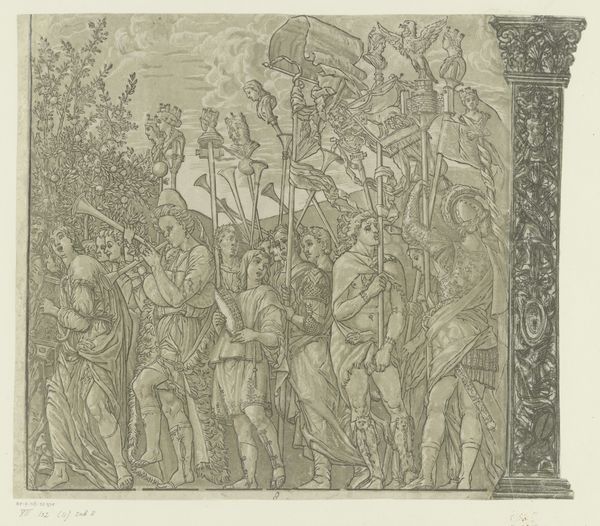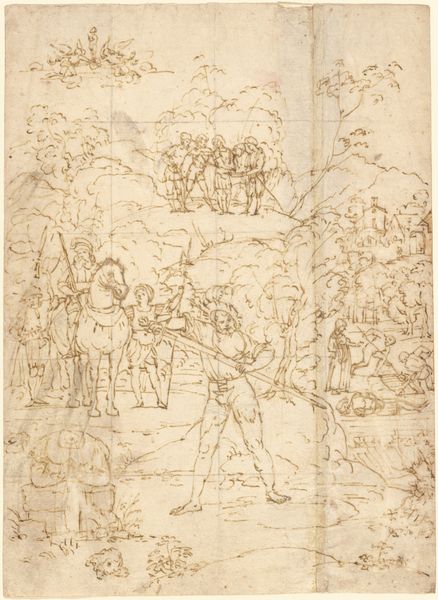
drawing, paper, ink, pen
#
landscape illustration sketch
#
drawing
#
narrative-art
#
pen sketch
#
figuration
#
paper
#
11_renaissance
#
personal sketchbook
#
ink
#
sketchwork
#
ink drawing experimentation
#
pen-ink sketch
#
pen work
#
sketchbook drawing
#
pen
#
genre-painting
#
history-painting
#
storyboard and sketchbook work
#
italian-renaissance
#
sketchbook art
Dimensions: height 291 mm, width 199 mm
Copyright: Rijks Museum: Open Domain
Editor: This is an intriguing pen and ink drawing from around 1545, "The blossoming staff of Aaron," by an anonymous artist, currently housed at the Rijksmuseum. The detailed line work, particularly in the figures’ drapery, is fascinating. The whole scene appears as a tightly packed crowd with very strong and dynamic leaders in the foreground. How does this particular illustration resonate with its historical setting? Curator: That's a very observant description. When we analyze art through a historical lens, it is useful to first recognize how institutions and socio-political factors influence the artist and, importantly, the work's reception. Consider this drawing not merely as a biblical illustration but as a reflection of the Renaissance fascination with power, authority, and divine validation. Editor: I see. So, the choice of depicting this specific scene wasn't just a personal artistic decision? Curator: Exactly. In the 16th century, the story of Aaron’s staff blooming was a potent symbol of religious authority, often used to justify the power of the priesthood. Furthermore, the artistic style itself, the emphasis on classical forms adapted from the Italian Renaissance and precise linear perspective, communicates power and order—something the religious establishment surely found appealing and potentially even commissioned. What visual cues indicate who holds the authority in the image? Editor: Well, besides the blossoming staff held up by Aaron and his followers, they seem to stand confidently at the forefront, clearly separate from the mass of people. Almost posing for our gaze. They dominate the visual space of the picture. Curator: Precisely. Consider how the presentation and reception of art, especially in religious contexts, serve to communicate particular messages to specific audiences. The careful attention given to classical garb, for example, would give authority to the depicted group and their claims on God. Editor: That adds so much depth! It’s like this drawing is less about illustrating a bible story and more about publicly negotiating social hierarchies. I appreciate knowing how socio-political dynamics shape artistic choices. Curator: I am glad I could reveal a bit about how cultural and political frameworks shape artworks, just as art continues to influence our perspectives.
Comments
No comments
Be the first to comment and join the conversation on the ultimate creative platform.
